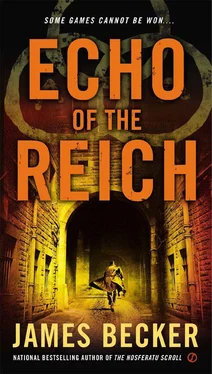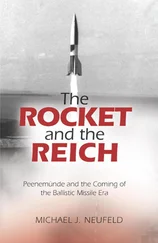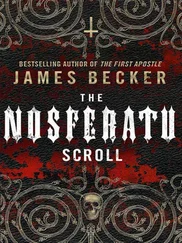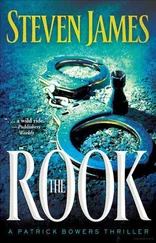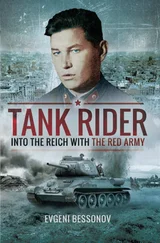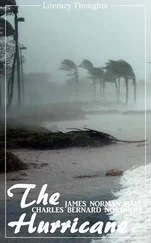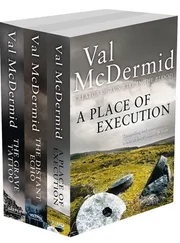James Becker - Echo of the Reich
Здесь есть возможность читать онлайн «James Becker - Echo of the Reich» весь текст электронной книги совершенно бесплатно (целиком полную версию без сокращений). В некоторых случаях можно слушать аудио, скачать через торрент в формате fb2 и присутствует краткое содержание. Жанр: Триллер, на английском языке. Описание произведения, (предисловие) а так же отзывы посетителей доступны на портале библиотеки ЛибКат.
- Название:Echo of the Reich
- Автор:
- Жанр:
- Год:неизвестен
- ISBN:нет данных
- Рейтинг книги:3 / 5. Голосов: 1
-
Избранное:Добавить в избранное
- Отзывы:
-
Ваша оценка:
- 60
- 1
- 2
- 3
- 4
- 5
Echo of the Reich: краткое содержание, описание и аннотация
Предлагаем к чтению аннотацию, описание, краткое содержание или предисловие (зависит от того, что написал сам автор книги «Echo of the Reich»). Если вы не нашли необходимую информацию о книге — напишите в комментариях, мы постараемся отыскать её.
Echo of the Reich — читать онлайн бесплатно полную книгу (весь текст) целиком
Ниже представлен текст книги, разбитый по страницам. Система сохранения места последней прочитанной страницы, позволяет с удобством читать онлайн бесплатно книгу «Echo of the Reich», без необходимости каждый раз заново искать на чём Вы остановились. Поставьте закладку, и сможете в любой момент перейти на страницу, на которой закончили чтение.
Интервал:
Закладка:
“What is known is that in January ’forty-two, a brand-new project code named Thor — or possibly Tor, meaning ‘gate’-was created, under the leadership of Professor Walther Gerlach, a leading German nuclear physicist. The project was under contract to the Heereswaffenamt Versuchsanstalt — that roughly translates as ‘Army Ordnance Office Research Station’-number ten, and was a part of the Nazi atomic bomb project. The operation functioned as a single entity until August of the following year. Then the project was divided into two separate parts, and the code name Tor or Thor was replaced by two other names: Chronos and Laternentrager. Depending on which source you look at, by the way, Chronos could either be spelled with a ‘C’ or a ‘K,’ as Kronos, and that could be significant.”
“Okay,” Bronson replied. “I already know what Laternentrager stands for, but what about Chronos? Is that Latin for ‘time,’ perhaps? You know, like in ‘chronometer’?”
“Almost. It’s actually Greek, but you’re right: the word does mean ‘time.’ Some researchers who’ve investigated this project have come up with some fairly unlikely conclusions about what the Nazis were trying to achieve. They looked at the code names- Tor and Chronos, ‘gate’ and ‘time’-and presumed that the purpose of the project was to build a time machine, or maybe come up with a device that could somehow be used to manipulate time.”
“I see what you mean by ‘unlikely.’”
“Exactly,” Angela agreed. “The chances of the Nazis actually managing to get anywhere with a project as futuristic as time manipulation well over half a century ago are pretty slim. And the other fairly obvious counterargument is that, even if they had, by some miracle, devised a way of altering time, it’s difficult to see how that could possibly have helped the war effort. What they really needed were weapons, guns or rockets or bombs, stuff like that, to achieve superiority on the battlefield or in the air, and that was what all their other secret projects, all their various Wunderwaffen programs, were designed to create. Personally, I think it’s most likely that the code words were randomly generated, and had no direct connection with the projects they were linked to. And that brings us neatly to our mystery weapon, Charite Anlage, the Wenceslas Mine and Die Glocke.”
“Now you’ve lost me,” Bronson said, pulling out to overtake two slow-moving cars. “Charity what?”
“Charite Anlage,” Angela repeated, “aka Projekt SS ten forty. It was a massive operation, beginning in June nineteen forty-two, and required the German company AEG to supply huge amounts of electrical power. It may even have been a joint project with Bosch and Siemens. According to one source, the entire venture was officially named Schlesische Wekstatten Dr. Furstenau, presumably because for a time it was based at Ksia?z? also known as Furstenstein Castle, a thirteenth-century castle at Silesia in Poland.”
“But what did it do?” Bronson asked.
“I’m coming to that. First, we need to go back to the nineteen thirties, before the war started. In nineteen thirty-six, a German scientist named Dr. Ronald Richter performed some experiments using electric arc furnaces to smelled lithium for U-boat batteries. Almost by accident, he discovered that by injecting deuterium into the plasma, into the arc, he could create a kind of nuclear fusion. Or at least, that was what he claimed.
“His work was to some extent complementary to that being undertaken at around the same time by Professor Gerlach, who had been involved in the creation of plasma by utilizing the spin polarization of atoms since the nineteen twenties. To me, it looks as if this entire project was conceived by Gerlach, who apparently convinced the Nazi high command that he could build a device that could transmute the element thorium into uranium, most likely using beryllium as a source of neutrons. Now you can really appreciate the significance of at least one of the code names, because I believe that it wasn’t called Projekt Tor, but Projekt Thor, a reference to thorium, and nothing to do with any kind of a gate.”
Angela glanced across at Bronson to make sure that he was still paying attention. He was.
“To me, as a nonscientist, the next step in the chain of logic seems to make sense. The Nazis were having a lot of trouble trying to get sufficient supplies of heavy water out of Norway, and they hadn’t got many other potential sources. I think they turned to Gerlach and his theoretical machine for converting thorium into uranium-uranium that could then be used to produce plutonium to create a nuclear bomb.”
Angela glanced back at her notebook to refresh her memory.
“There are a few more facts that I’ve been able to turn up but, as you’ll obviously appreciate, some of the information is pretty sketchy, just because of the circumstances and what happened at the end of the war. It seems there were at least two important laboratories involved, one at a town named Leubus-its modern name is Lubiaz-in Silesia, and another at Neumakt-which is now called Sroda Slaska-to the east of Breslau or Wroclaw. I mentioned Die Glocke, and this device was at the very heart of the project. The German name means ‘the Bell,’ and was apparently inspired by a poem penned by a man named Friedrich Schiller, entitled the ‘Song of the Bell,’ which describes the forging of a great bell from metal of extreme purity. I’m sure the Nazis would have loved the mystical overtones of this idea, creating a perfect device from perfect material, much as they were trying to do with the huge and diverse population of the European countries they had conquered.
“The other reason for the name was because the device apparently looked very much like a large bell. Again, it depends upon which source you refer to, but it seems that Die Glocke was partly built at the
laboratories in Leubus and Neumakt. The main part of the unit was a contrarotating centrifuge, and that was fabricated in Germany, at Dessau, by a company named BAMAG: the Berlin Anhaltische Maschinenbau AG.
“The obvious question is: did it work? Well, it did do something, that much we’re quite sure of. And, if it did work, how did it function? Were the Nazis able to produce uranium in this device? Nobody knows the answer to that specific question, and there are various ideas about its form and function. This isn’t my area of expertise, obviously, but I’ve looked at various theories suggested by people who seem to know what they’re talking about.”
Angela turned to a fresh page in her notebook and read from her notes: “The most plausible suggestion is that the device was a plasma induction coil, which worked by using the two colocated contrarotating centrifuges to spin mercury in a powerful magnetic field. This would cause a thing called a toroidal plasma to be created. Compounds of thorium and beryllium would already be in position in the core of the centrifuge, held in position in a kind of jelly made from paraffin. The thorium would then be bombarded by neutrons stripped from the beryllium, and this bombardment would result in the creation of uranium.” She looked up. “That was the theory, as far as most researchers have been able to deduce. But I have no idea if it’s scientifically plausible, or even possible, because nobody, apart from the scientists and technicians who worked on it, ever saw it.”
Bronson glanced at her. “You mean, they didn’t find it after the war?”
Angela shook her head. “No, but that’s another story, and we’re not there yet. First, you remember that I told you the Thor project was divided into two?”
“Yes. The new ones were called Chronos and Laternentrager.”
“Exactly. And I also said that there was some dispute over the spelling of the word Chronos. One reason for this is that Kronos spelt with a ‘K’ is a classical name for Saturn, and the shape that a toroidal plasma would assume is much like that planet, a central core containing the compounds of beryllium and thorium, with the plasma forming a ring around the outside. To me, that just seems too deliberate a name to be coincidental.
Читать дальшеИнтервал:
Закладка:
Похожие книги на «Echo of the Reich»
Представляем Вашему вниманию похожие книги на «Echo of the Reich» списком для выбора. Мы отобрали схожую по названию и смыслу литературу в надежде предоставить читателям больше вариантов отыскать новые, интересные, ещё непрочитанные произведения.
Обсуждение, отзывы о книге «Echo of the Reich» и просто собственные мнения читателей. Оставьте ваши комментарии, напишите, что Вы думаете о произведении, его смысле или главных героях. Укажите что конкретно понравилось, а что нет, и почему Вы так считаете.
